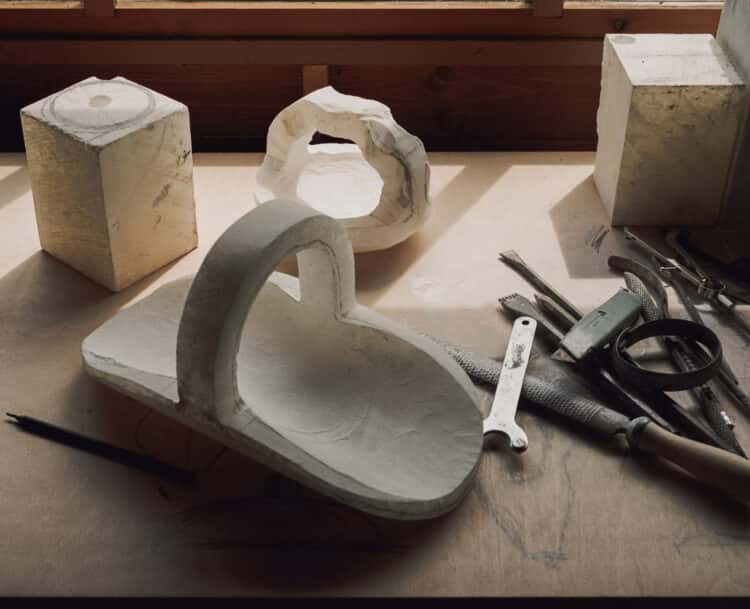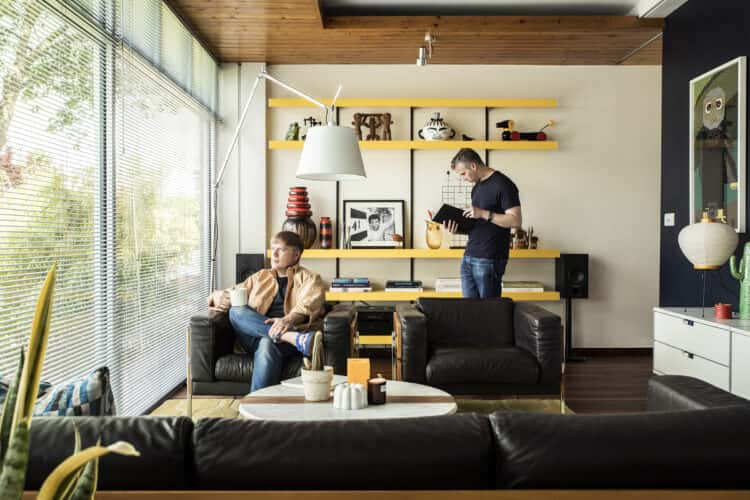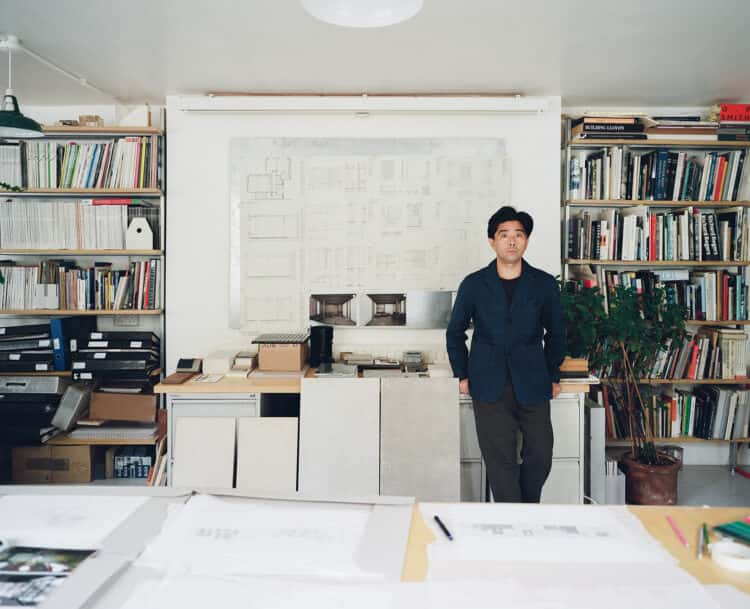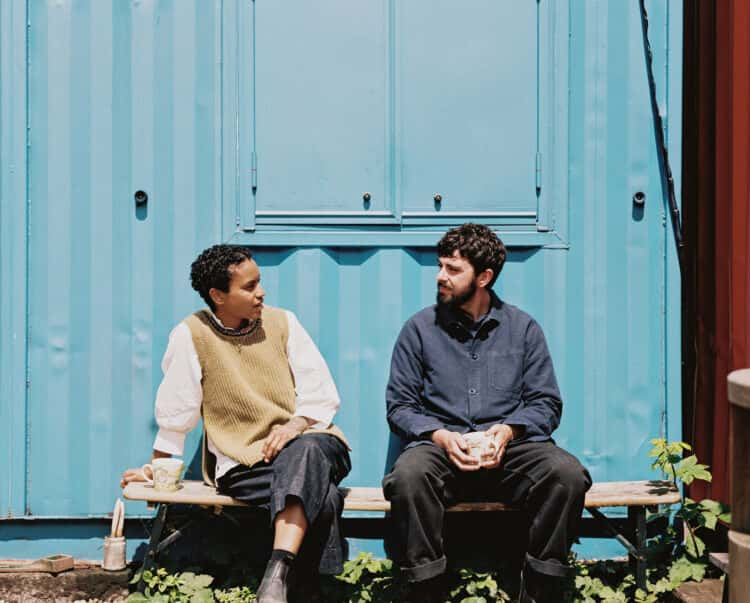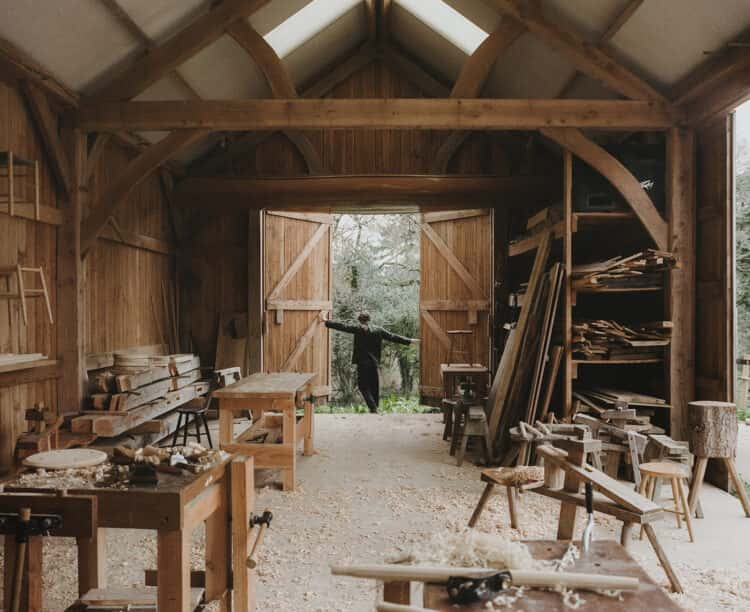Stone sculptor Oliver Cook on the translucent beauty of alabaster at his workshop in Ashby, Leicestershire
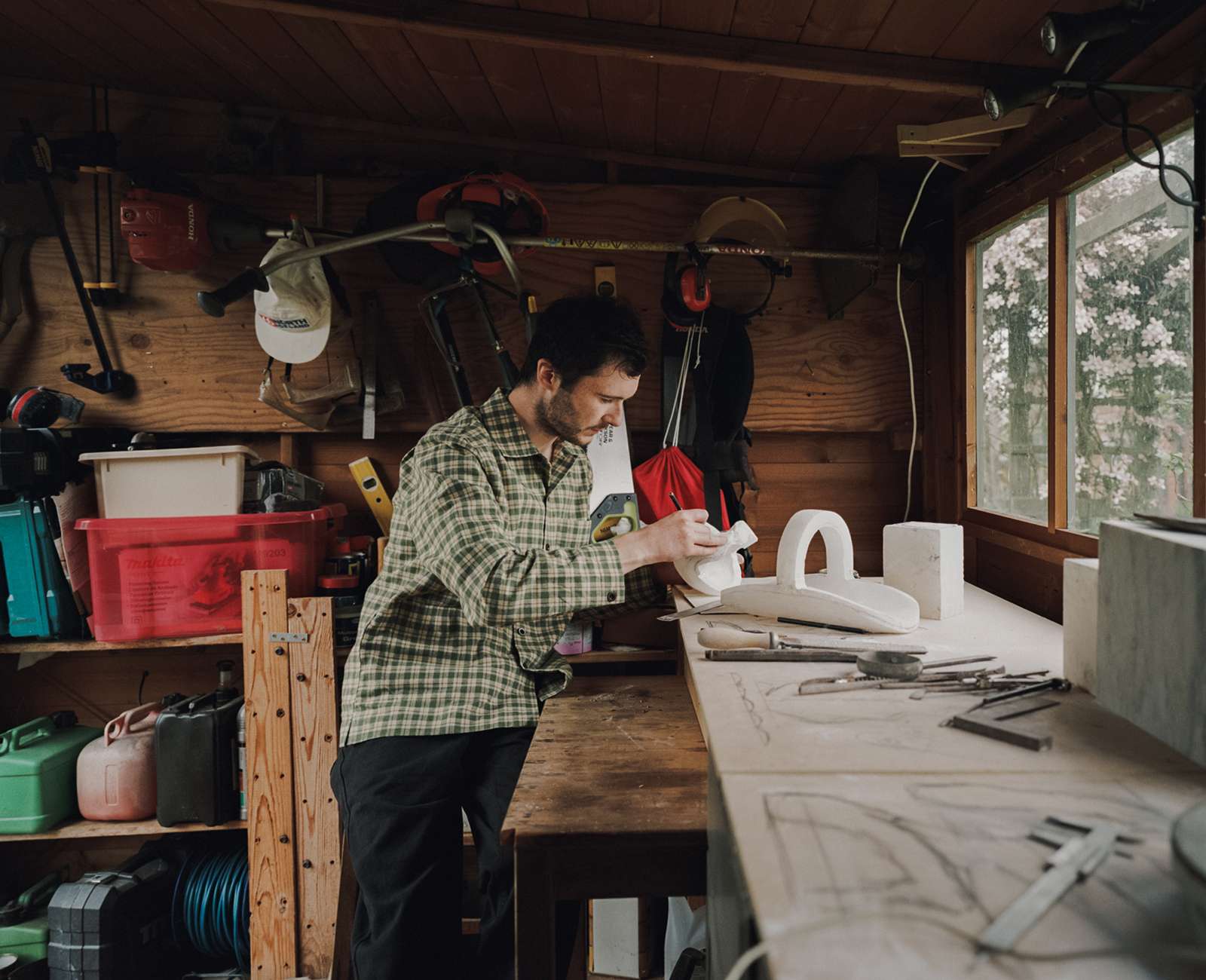
Words Billie Brand
Film Edmund Cook
Photography Elliot Sheppard
Oliver owes it to chance – or fate, even – that he works in alabaster. If it wasn’t for a trip to Kettle’s Yard in 2019, where he was struck by an exhibition on stoneware, he might still be woodworking. The encounter inspired Oliver to get busy, teaching himself his new practice from his partner’s parents’ garden, where the land would allow for experimentation and mess. Alabaster might be more commonly used for intricate ornamental sculptures, but Oliver is doing things differently. Instead, the 30-year-old is creating contemporary functional vessels and objects that make the most of the diaphanous qualities of the ancient material.
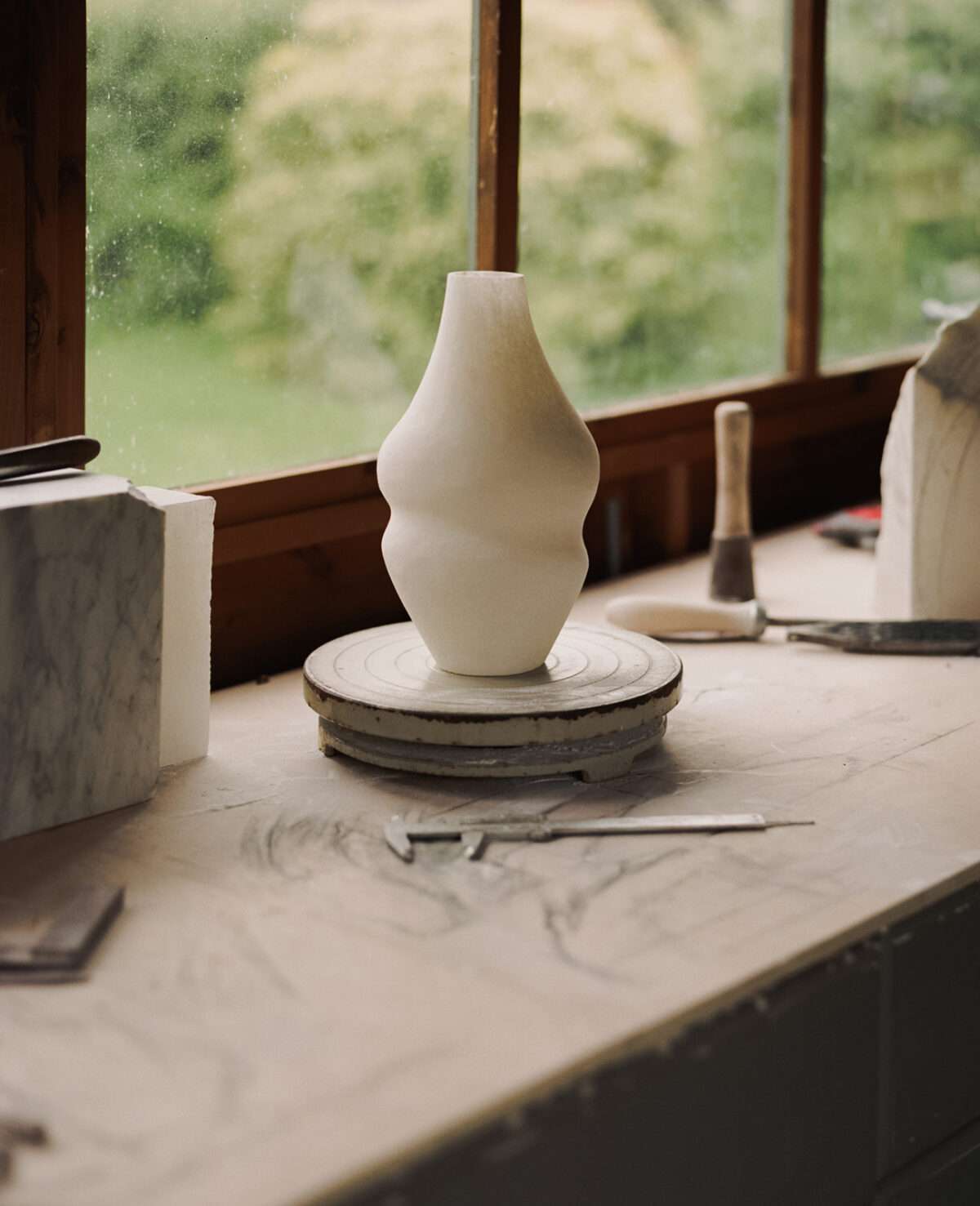
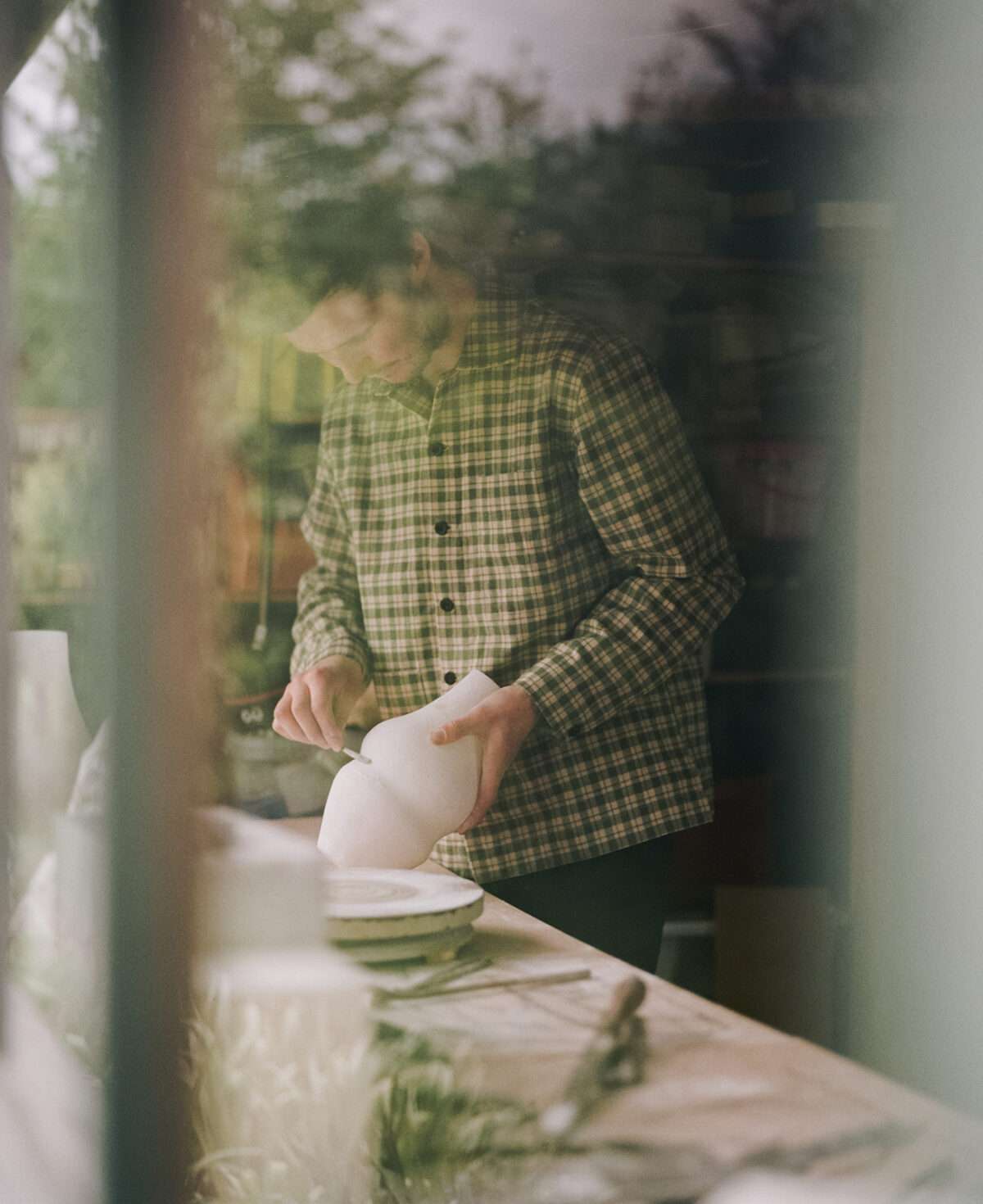
Oliver: “Each piece I make is carved from a single block of white Italian alabaster. The translucent stone just shows off light so well, which is why I like the idea of my objects sitting on different windowsills around a house over the course of the year, depending on where the sun is.
“I’d always made things – I was creating wooden furniture for a long time before I was working with stone – but I wanted to try something new. In September 2019, I visited Kettle’s Yard in Cambridge, where I was living at the time. There was an exhibition on the ceramicist Jennifer Lee, showcasing all her vases. It got me thinking. I had also just come across the work of Isamu Noguchi and Hanna Eshel and, while neither of them work in alabaster, I was really drawn to the nature of their sculptures.
“I began to search for a stone yard. I found one relatively nearby and decided to buy a block of stone and go from there. They had all kinds for sale: soapstone, marble, alabaster. The place was amazing. I went with alabaster as I was told how easy it is to work with. Because there’s no grain, you can work it in any direction and it won’t crack.
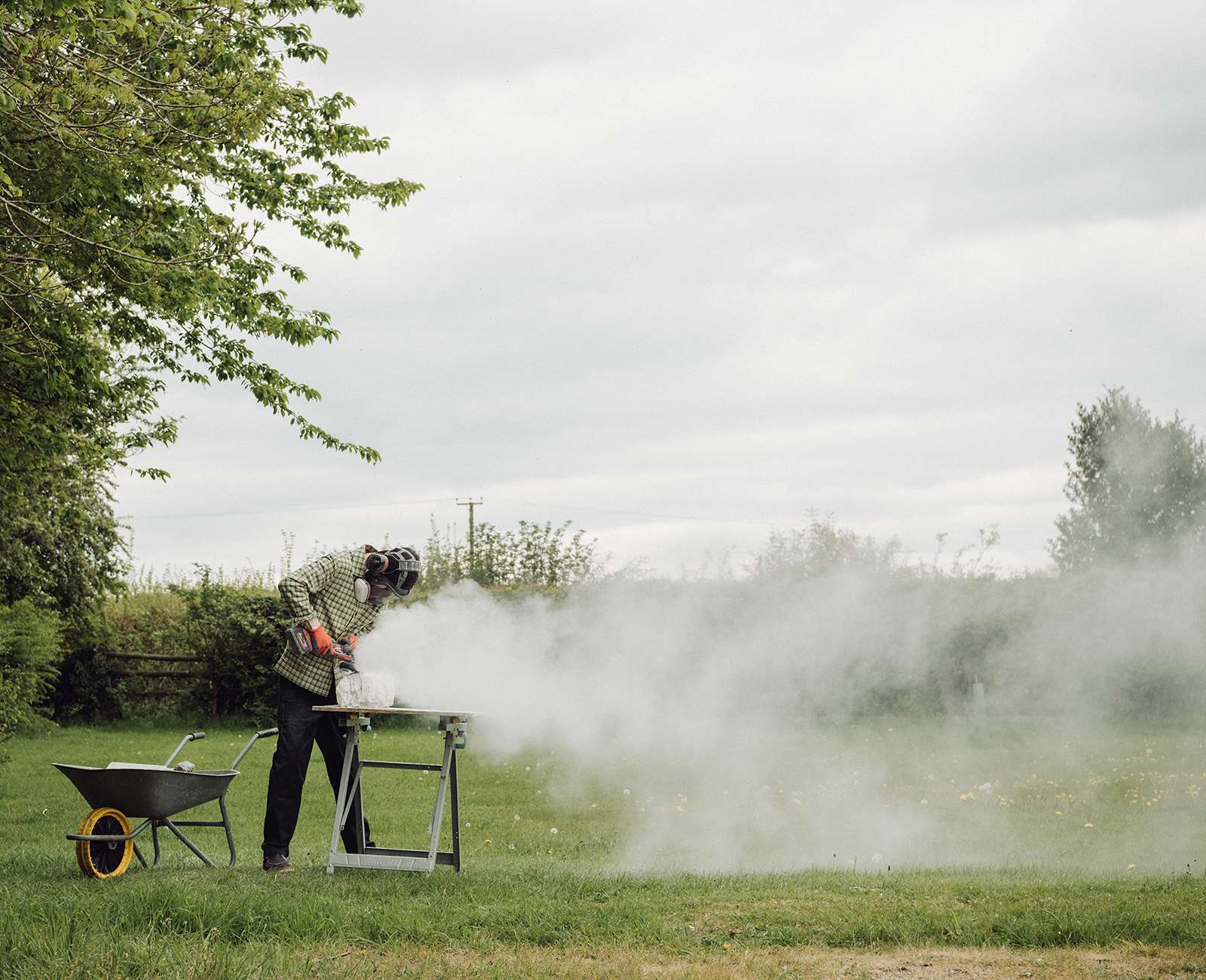
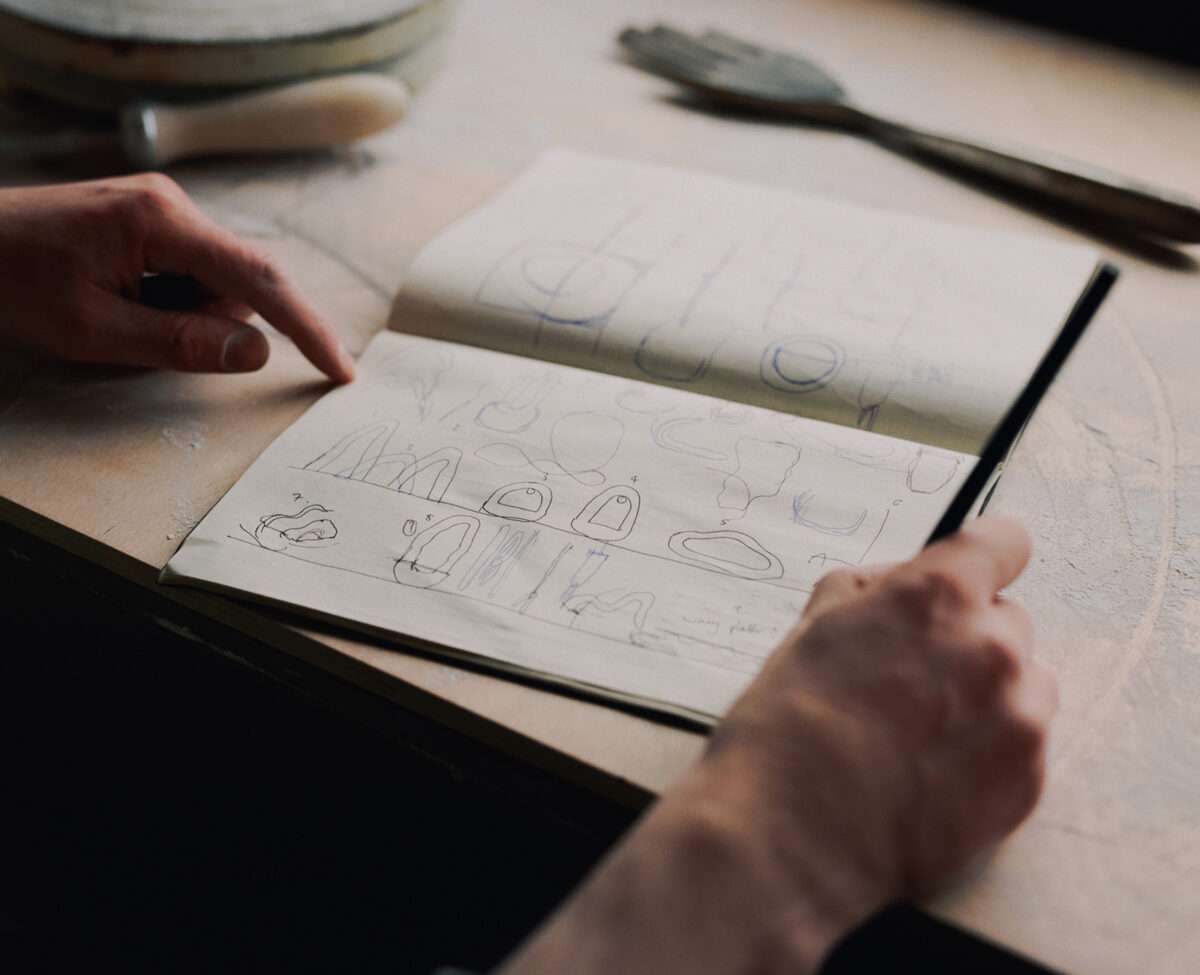
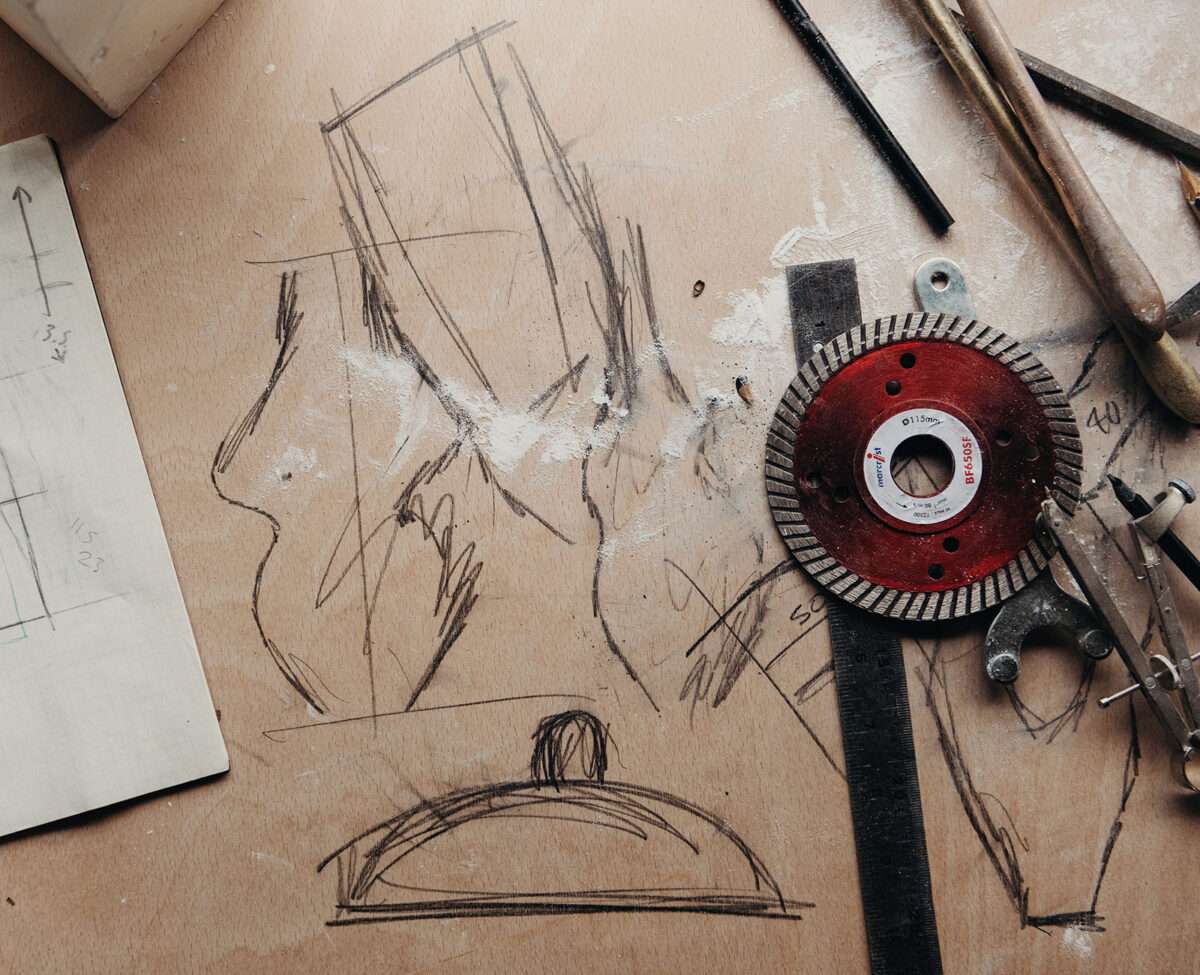
“Compared to wood, which was the main material I’d worked with until that point, alabaster is so soft. It’s so enjoyable – especially when you reach the final stages of carving. As the sides of the vases and bowls become thinner and the surface becomes more and more polished, it allows even more light to pass through. People have been to my shows and not known what the material is. It’s so shiny and smooth that some think it’s glass. With future work I plan to explore lighting and want to really push myself with how thin I can make each piece.
“My creative process always starts with the concept. Each piece is individual. I sketch out the design and dimensions then draw the design on the block of stone, taking into account any quarry marks or other inclusions. I then rough out the form using an angle grinder and chisels. Once I have the rough shape, I refine it using rasps – a coarse file. Then I can start polishing. It’s a slow process because you need to be really careful not to take out chunks of the material with the tools. It’s completely different to working with something like clay, for example, which is an additive process.
“The experience is very meditative, especially as I listen to a lot of music while I work. I first got into stone carving during the first lockdown, so I was putting a lot of time into it. But, where I worked – in my workshop at my girlfriend’s parents – I had little signal, so I had to download anything I wanted to listen to before I got there. I played Tame Impala so much that I got a notification saying I was in the top 0.05 per cent of listeners! The same thing happened with James Blake too.
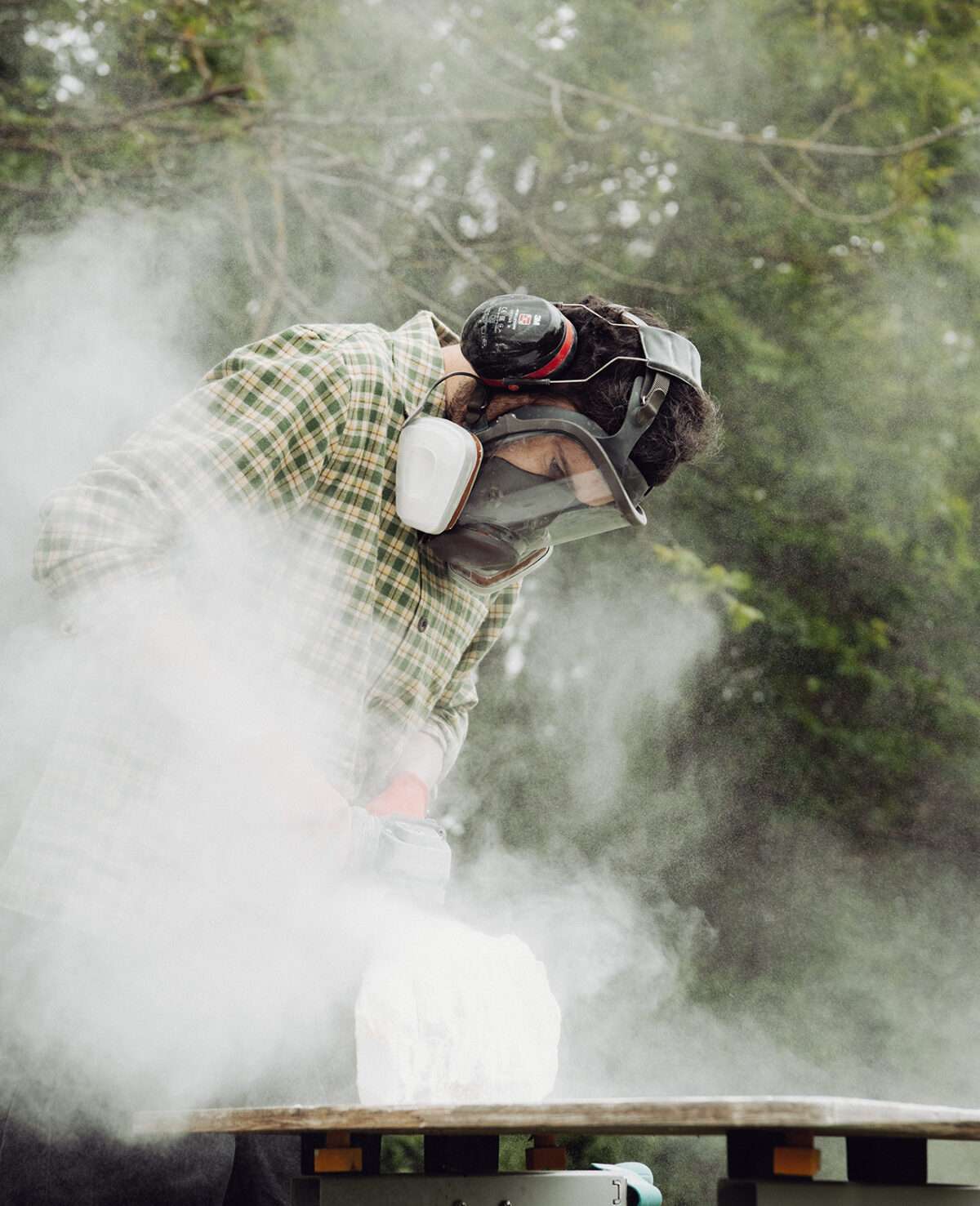
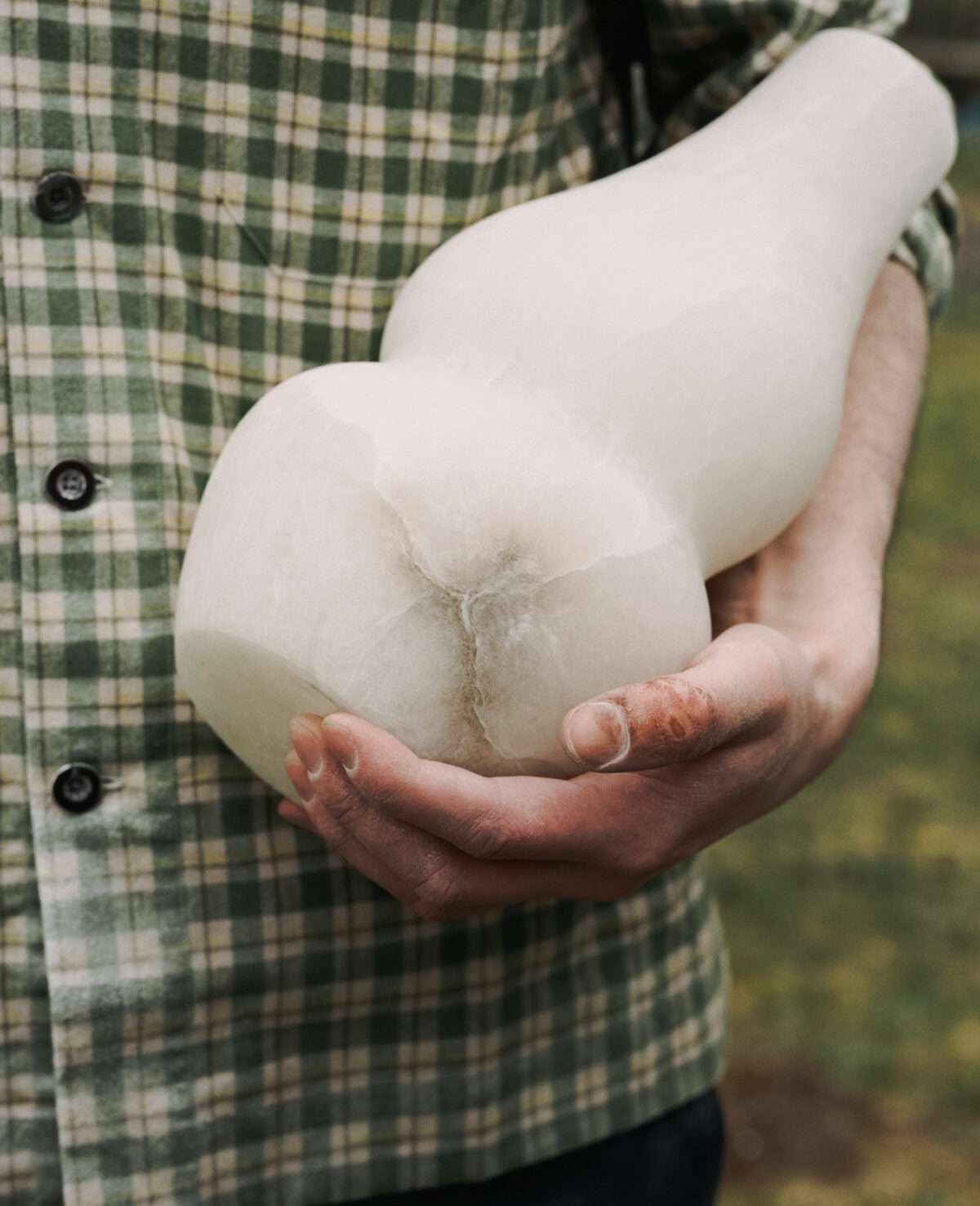
“Where I work, there’s a lot of outdoor space. Carving stone and using power tools creates so much dust that you have to do it outside, unless you have a professional dust-extraction system. I also have another workshop in Manchester, which is a converted garage. It’s very messy – but I guess this is a very messy craft.
“I don’t know if I consider myself a disrupter, but I think of the work I’m doing as something different. The material I use is ancient – people have been working with stone for thousands and thousands of years – but I think the way I’m using it is modern. I’ve not come across anyone else making alabaster objects inspired by wicker baskets, for instance, or other everyday objects. I think designing alabaster pieces that people can interact with sets my work apart.”
